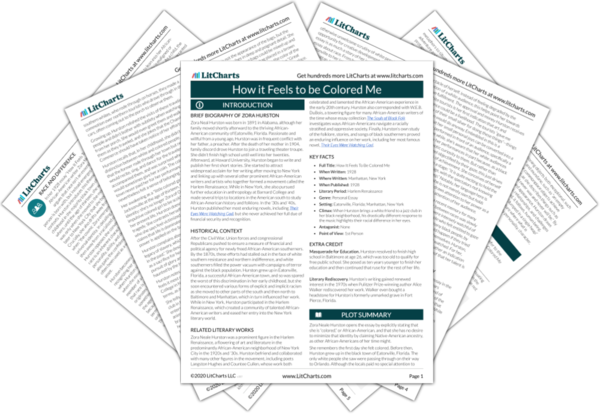Race and Difference
In her 1928 essay “How It Feels To Be Colored Me,” African-American writer Zora Neale Hurston argues that race isn’t an essential feature that a person is born with, but instead emerges in specific social contexts. Hurston introduces this theme by describing her childhood in the majority black town of Eatonville, Florida, where, until the age of thirteen, she was not yet “colored.” It was only when she moved to the more diverse Jacksonville and…
read analysis of Race and DifferencePerformance
From the beginning of her essay, Zora Neale Hurston’s ideas about race are bound up in creative performance. Her earliest experiences with white people are of singing and dancing for a white audience. Just as she reconfigures ideas of race to her advantage, she uses the otherwise unwelcome scrutiny of white people as an opportunity for creative development. In this way, Hurston’s essay is as much a story of her journey as an artist…
read analysis of PerformanceHistory and Opportunity
When Zora Neale Hurston wrote this essay in the 1920s, the United States was only 60 years removed from the Civil War, making the end of slavery well within living memory. As such, any account of the African-American experience would have to reckon with that legacy. Hurston does this in a uniquely idiosyncratic way. While acknowledging the persistence of racial discrimination, she minimizes the impact of slavery on the current circumstances of African-Americans. Instead, she…
read analysis of History and Opportunity







